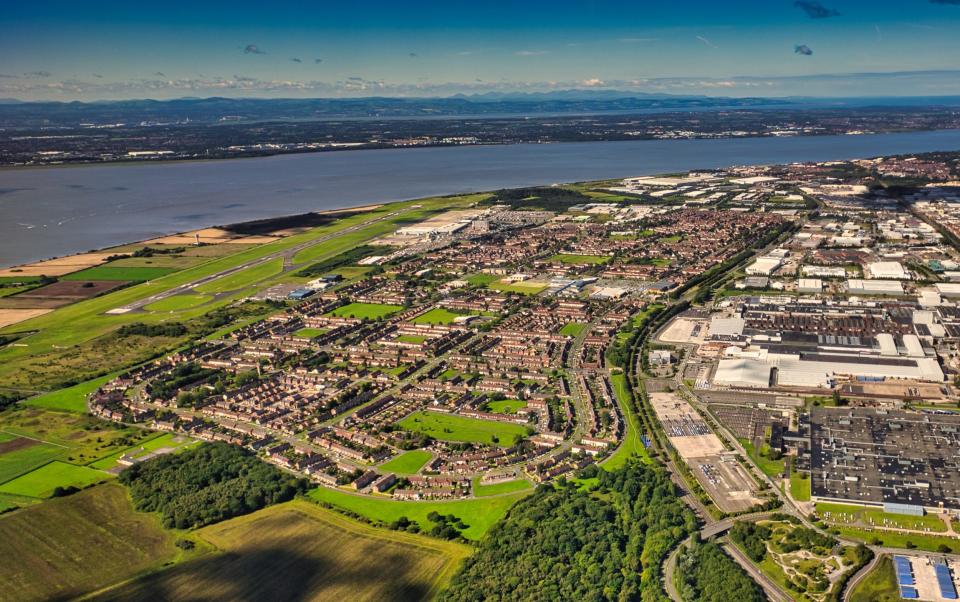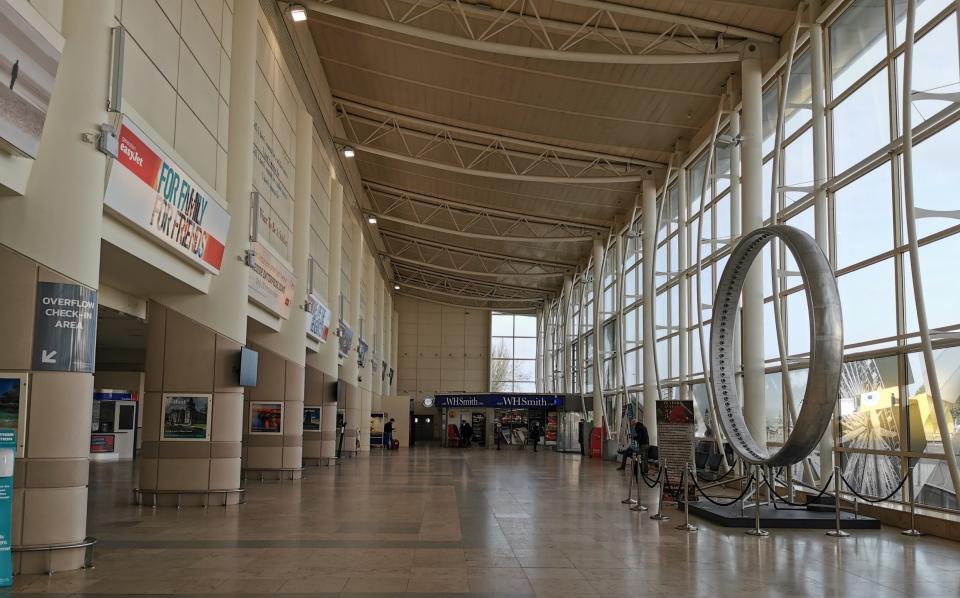This small but perfectly formed airport is the best in Britain

Liverpool and Manchester are close rivals in everything except airports. Because, when it comes to taking off for sunnier climes, the former’s John Lennon Airport is the Reds and Blues, Beatles and Bunnymen, Albert Docks and Liverpudlian drollery all rolled into one. The latter’s hub is Eccles United FC, Liam without Noel, the wrong end of the Ship Canal in a Manc rain shower.
For the latest annual Which? UK airport survey, 4,000 people were invited to look back on their experiences over the past 12 months across 11 categories, including seating, staff, toilets and queues at check in, bag drop, passport control and security. Liverpool John Lennon Airport came out number one while Manchester Airport – 30 miles down the road – was the worst. The survey split its review into terminals, so in fact Manchester T3 came bottom, T1 came second from bottom and T2 came fifth from bottom, out of 24 airports.

I live about 63 miles from Lennon, and 52 miles from Manchester, or Ringway as we grew up calling it. The 10-mile difference is nothing when you consider the pros and cons of each airport.
Let’s start with getting there by car. Lennon sits beside the airy Mersey in the genteel suburb of Speke. Driving to it is smooth and painless, with few lights or junctions. Manchester is in a north-east Cheshire field, ten miles south of the city centre. Its location is hugely convenient for the 90 people who live in nearby villages and Peak District hill-dwellers. As most of us live north and west and east of the city, getting there means a series of throbbing A-roads and bad motorways – including the often gridlocked M60 ring road.
For tourists leaving from the city centre, Lennon is served by buses, including the fast no. 500 service (27 mins from the centre). Manchester has trains (operated by notorious, now nationalised operators TransPennine and Northern) and Metrolink trams (which take 58 minutes, with a change en route). Transport for Greater Manchester’s website is so poorly designed that it mashes up trains and trams and contains no easy-to-access timetables. It even recommends a 3h 40m walk from Piccadilly Gardens.

Parking in airports has become a stress-point, as if the awful companies who run them dedicate special boardroom time to working out new ways to inject angst into pre-flight anticipation. Lennon has a £5 “express” drop off and a free one ten minutes’ walk away. Long stay parking is £105 for a week or £64 pre-booked. Manchester charges £5 for five minutes and £6 for 10 minutes of dropping-off, while the free option involves a shuttle bus. Unbooked parking is very limited and costs a hilarious £360 for a week. Booked beforehand, it varies from £56 to £97. An online screed gives all the options in a time-consuming format. You will need another screen for a map of terminals, parking and roads.
Because – and here we’re getting to the nub – Manchester is big, busy and noisy. It has three terminals, handling 23.4 million passenger movements in 2022. Liverpool has one terminal and handled 3.5 million passengers.
Size is everything when it comes to airports, especially those that are poorly designed and badly managed. Manchester, which has evolved (to put it jazzily; a better word might be “stumbled”) over 80 years from a rural aerodrome into the country’s third busiest airport, feels confusing and bloated and bad-tempered.

The atmosphere at check-in and, above all, security, is absolutely manic at times. One Which? traveller complained of “huge queues” at check-in, branding the situation a “joke”. Others said the airport experience was “crowded, noisy, generally stressful” and “dispiriting from start to finish”. Multiple respondents reported long queues at various stages, and noted the airport was “overcrowded”.
At Liverpool it’s all basically a stroll. Distances are short, options are few, information is clear.
Like all large airports, once you get airside, Manchester is a massive shopping gauntlet. It’s a rudimentary retail world, too, with Boots, WH Smith, Fat Face, JD Sports, InMotion and Hamleys the unchallenged kings of the simulacrum-high-street. So you can get a hyper-inflated City shirt, an overpriced phone-charging cable, a bag of crisps and some suntan oil. Costa, Pret, Upper Crust and M&S Simply Food ensure your culinary experiences are exactly the same as on Rochdale high street. Manchester’s shopping prices were roundly unloved by the Which? survey respondents. Liverpool is no better, to be fair, but there’s less of it.
Sated and spent-up, you’re going to need a sit down – especially if there’s a computer break down, a strike or some other holiday hindrance. Manchester’s Terminal 3 scored a lamentable one star for seating. There just seems to be not enough airport for all the people using it – like the Arndale Centre on a Saturday afternoon.

The extra annoying thing about Manchester is that it really is much ado about nowhere. Ninety per cent of the flights are to/from Mallorca, the Greek Islands, no-frills airstrips in second-tier European cities, package-hol Turkey and plastic cities like Dubai, or else Heathrow to catch a double-decker to an exotic destination. Manchester is more like a bus station than an “international airport”, offering quantity and vulgarity over quality and variety.
Liverpool is small, discreet, polite, charming – like the best Scousers, I’d say (and I’m a total “wool” by the way). If Lennon Airport were a song it would be Echo and the Bunnymen’s I Fly Tonight or Lightning Seeds’ Pure. If Manchester Airport were a song, it would be the Smiths’ Heaven Knows I’m Miserable Now.
Once upon a time, there was a masterplan to provide the North West – which, as pre-1974 Lancashire, had a population of 5.1 million, plus 1.5 million in Cheshire – with a single airport conveniently located for all. The RAF/USAF base at Burtonwood was considered. It was the biggest storage facility in Western Europe. It supported the Berlin airlift. It sat beside the West Coast main line (and, later, the M6). A little bit of subsidence from mining and short-termism, plus city pulling power, meant the region ended up with two airports – one small (and unable to expand without a river island) and just about satisfactory, one big and bad.
I was born in Burtonwood in 1966, when the runways were still there. If I had been a planner, I could have saved my fellow North Westerners all this trouble. Though I would surely have been a pilot, taking off from my village drome, in leather, goggles and dashing tash. Flying, after all, was once romantic – and even checking in was a pleasure and a privilege.


